IKEA effect
description: cognitive bias in which consumers place a disproportionately high value on products they partially created
20 results
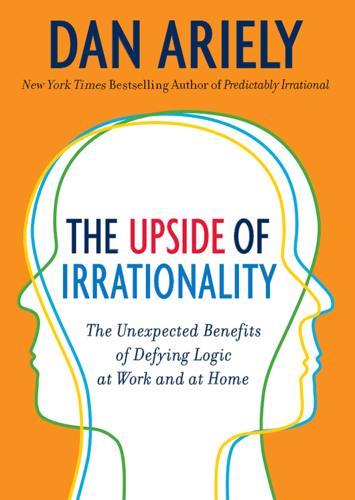
The Upside of Irrationality: The Unexpected Benefits of Defying Logic at Work and at Home
by
Dan Ariely
Published 31 May 2010
Mike, Daniel, and I decided that the notion of attachment to the things we make was worth testing, and in particular we wanted to understand the process by which labor begets love. Our first step (as in all important research projects) was to come up with a code name for the effect. In honor of the inspiration for the study, we decided to call the overvaluation resulting from labor “the IKEA effect.” But simply documenting the IKEA effect was not what we were after. We wanted to find out whether the greater perceived value resulting from the IKEA effect might be based on sentimental attachment (“It’s crooked and barely strong enough to hold my books, but it’s my bookshelf!”) or on self-delusion (“This bookshelf is easily as nice as the $500 version at Design Within Reach!”).
…
Somehow, despite the incredible amount of effort I invested in their unfinished creation, I did not end up loving those partially made objets d’art. My recollections of the rehabilitation center make me wonder if it is important to complete a project in order to overvalue it. In other words, in order to enjoy the IKEA effect, is it necessary for our efforts to result in success, even if that success simply means that the project was finished? According to our reasoning behind the IKEA effect, more effort imbues greater valuation and appreciation. This means that to increase your feelings of pride and ownership in your daily life, you should take a larger part in creating more of the things you use in your daily life.
…
Anne Preston, “The Nonprofit Worker in a For-Profit World,” Journal of Labor Economics 7, no. 4 (1989): 438–463. Chapter 3: The IKEA Effect: Why We Overvalue What We Make Based on Gary Becker, Morris H. DeGroot, and Jacob Marschak, “An Experimental Study of Some Stochastic Models for Wagers,” Behavioral Science 8, no. 3 (1963): 199–201. Leon Festinger, A Theory of Cognitive Dissonance (Stanford, Calif.: Stanford University Press, 1957). Nikolaus Franke, Martin Schreier, and Ulrike Kaiser, “The ‘I Designed It Myself’ Effect in Mass Customization,” Management Science 56, no. 1 (2009): 125–140. Michael Norton, Daniel Mochon, and Dan Ariely, “The IKEA Effect: When Labor Leads to Love,” manuscript, Harvard University, 2010.
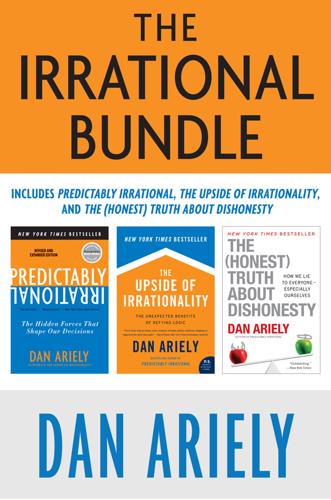
The Irrational Bundle
by
Dan Ariely
Published 3 Apr 2013
Mike, Daniel, and I decided that the notion of attachment to the things we make was worth testing, and in particular we wanted to understand the process by which labor begets love. Our first step (as in all important research projects) was to come up with a code name for the effect. In honor of the inspiration for the study, we decided to call the overvaluation resulting from labor “the IKEA effect.” But simply documenting the IKEA effect was not what we were after. We wanted to find out whether the greater perceived value resulting from the IKEA effect might be based on sentimental attachment (“It’s crooked and barely strong enough to hold my books, but it’s my bookshelf!”) or on self-delusion (“This bookshelf is easily as nice as the $500 version at Design Within Reach!”).
…
Somehow, despite the incredible amount of effort I invested in their unfinished creation, I did not end up loving those partially made objets d’art. My recollections of the rehabilitation center make me wonder if it is important to complete a project in order to overvalue it. In other words, in order to enjoy the IKEA effect, is it necessary for our efforts to result in success, even if that success simply means that the project was finished? According to our reasoning behind the IKEA effect, more effort imbues greater valuation and appreciation. This means that to increase your feelings of pride and ownership in your daily life, you should take a larger part in creating more of the things you use in your daily life.
…
Anne Preston, “The Nonprofit Worker in a For-Profit World,” Journal of Labor Economics 7, no. 4 (1989): 438–463. Chapter 3: The IKEA Effect: Why We Overvalue What We Make Based on Gary Becker, Morris H. DeGroot, and Jacob Marschak, “An Experimental Study of Some Stochastic Models for Wagers,” Behavioral Science 8, no. 3 (1963): 199–201. Leon Festinger, A Theory of Cognitive Dissonance (Stanford, Calif.: Stanford University Press, 1957). Nikolaus Franke, Martin Schreier, and Ulrike Kaiser, “The ‘I Designed It Myself’ Effect in Mass Customization,” Management Science 56, no. 1 (2009): 125–140. Michael Norton, Daniel Mochon, and Dan Ariely, “The IKEA Effect: When Labor Leads to Love,” manuscript, Harvard University, 2010.
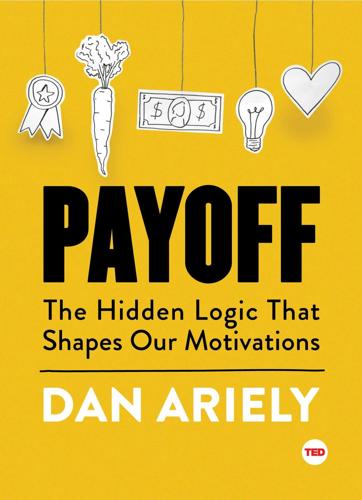
Payoff: The Hidden Logic That Shapes Our Motivations
by
Dan Ariely
Published 15 Nov 2016
Employees Not Engaged Despite Gains in 2014,” Gallup, January 28, 2015, http://www.gallup.com/poll/181289/majority-employees-not-engaged-despite-gains-2014.aspx. 6 Adam Smith, “An Inquiry into the Nature and Causes of the Wealth of Nations,” http://geolib.com/smith.adam/won1-01.html. 7 John Maynard Keynes, The General Theory of Employment, Interest and Money (1936). 8 Michelle Park, “A History of the Cake Mix, the Invention That Redefined ‘Baking,’ ” http://www.bonappetit.com/entertaining-style/pop-culture/article/cake-mix-history. 9 Mike Norton, Daniel Mochon, and Dan Ariely “The IKEA Effect: When Labor Leads to Love,” Journal of Consumer Psychology (2012). Daniel Mochon, Mike Norton, and Dan Ariely, “Bolstering and Restoring Feelings of Competence via the IKEA Effect,” International Journal of Research in Marketing (2012). 10 I wrote about this in Irrationally Yours (New York: HarperCollins, 2015). 11 Alex Shaw, Vivian Li, and Kristina Olson, “Children Apply Principles of Physical Ownership to Ownership of Ideas,” Cognitive Science (2012). 12 Ibid. 13 Dan Ariely, Uri Gneezy, George Loewenstein, and Nina Mazar, “Large Stakes and Big Mistakes,” Review of Economic Studies (2009). 14 Kaitlin Woolley and Ayelet Fishbach, “The Experience Matters More Than You Think: People Value Intrinsic Incentives More Inside Than Outside an Activity,” Journal of Personality and Social Psychology (2015). 15 Dan Ariely, Predictably Irrational (New York: HarperCollins, 2008). 16 Sigal Bardas, “The Ripple Effect: Emotional Contagion and Its Effect on Group Behavior,” Administrative Science Quarterly (2002). 17 William Shakespeare, Henry VI, part 2, act 4, scene 2, line 73. 18 Douglas R.
…
Over the years, I’ve noticed that I look at that chest of drawers more often, and more fondly, than any other piece of furniture in my house. My colleagues Mike Norton (a professor at Harvard University), Daniel Mochon (a professor at Tulane University), and I described the general over-fondness we have for stuff we’ve made ourselves as the “IKEA effect.” And while IKEA inspired our original research, IKEA was hardly the first to understand the value of self-assembly. Consider the history of cake mixes. Back in the 1940s, when most women worked at home, a company called P. Duff and Sons introduced boxed cake mixes. The mixes were almost ready-made; housewives had only to add water, stir up the mix in a bowl, pour the batter into a cake pan, bake it at 350 degrees for half an hour, and voilà!
…
They didn’t just accept the compliment; they believed they deserved it.8 The Duff cake mix story offers a simple and clear example of the power of effort and ownership and how it relates to motivation. It shows that when we work harder and spend a bit more time and effort, we feel a greater sense of ownership and thus enjoy more the fruits of our efforts. My Beautiful Creature To examine the “IKEA effect” in a more controlled, experimental way, Daniel, Mike, and I asked participants to work for us by making some origami creations in exchange for an hourly wage. We equipped them with colored paper and standard written origami instructions that showed where to crease the paper and the direction to fold it in order to create paper cranes and frogs, and off they went.
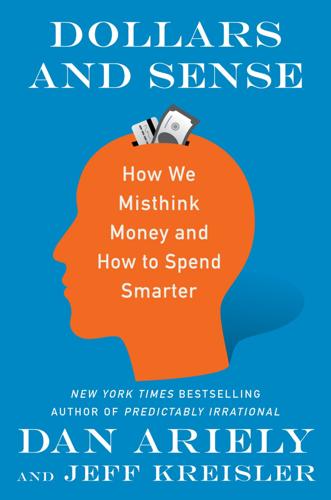
Dollars and Sense: How We Misthink Money and How to Spend Smarter
by
Dr. Dan Ariely
and
Jeff Kreisler
Published 7 Nov 2017
The more we feel we own it. The story of effort and ownership doesn’t end there. It turns out that the harder it is to make something, the more we feel that we had some part in creating it, and our love for it increases even more. Mike Norton, Daniel Mochon, and Dan named this phenomenon THE IKEA EFFECT—so named after the meatball restaurant/umlaut factory/children’s playland that moonlights as a furniture store. Think about what it takes to create a piece of Ikea furniture: We must drive to the massive, rarely convenient Ikea store, navigate the parking lot, watch out for other people’s children, grab an oversize bag, follow arrows, look at space-age kitchen equipment, distract our spouse from looking at space-age kitchen equipment, make fun of the names we don’t understand, then go pick out our items, lug them to the car, and load them.
…
A nightstand and a lamp! And several extra parts that we quickly hide from our family. After all that work, don’t we feel a strong sense of attachment, a feeling of pride and accomplishment? This is our thing; we made it! We’re sure as heck not going to just toss it aside for a few pennies. That’s the Ikea effect.2 Think about all the work the Bradleys put into their house. The open floor plan. The pictures. The bike rack chandelier. All of that effort made it feel like something special that they had created. In their eyes, it increased in value with every small change and improvement. The house was such a perfect fit for them and their preferences because of the effort they extended to make it special.
…
Knetsch (Simon Fraser University), and Richard H. Thaler (University of Chicago), “The Endowment Effect: Evidence of Losses Valued More than Gains,” Handbook of Experimental Economics Results (2008). 2. Michael I. Norton (Harvard Business School), Daniel Mochon (University of California, San Diego), and Dan Ariely (Duke University), “The IKEA Effect: When Labor Leads to Love,” Journal of Consumer Psychology 22, no. 3 (2012): 453-460. 3. Ziv Carmon (INSEAD) and Dan Ariely (MIT), “Focusing on the Forgone: How Value Can Appear So Different to Buyers and Sellers,” Journal of Consumer Research 27, no. 3 (2000): 360–370. 4. Daniel Kahneman (UC Berkeley), Jack L.
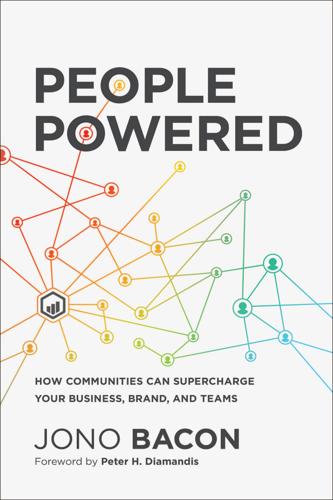
People Powered: How Communities Can Supercharge Your Business, Brand, and Teams
by
Jono Bacon
Published 12 Nov 2019
Interestingly, many of us consistently make the same irrational decisions based on the same stimuli. As an example, there is the Ikea Effect.1 If you and I were to each go and buy a MÖRBYLÅNGA table from Ikea, then go home and put it together, you would think your table is better than mine, and vice versa. Despite the fact that they are exactly the same table model, we consistently overvalue our own creations, and as you can imagine, this can have significant ramifications for communities and companies that have people working together and reviewing each other’s work. As one example, if we are mindful of the Ikea Effect, we can design peer review in communities to be more objective and avoid the risk of people getting frustrated because other people don’t share their (overstated) feeling of value for their work.
…
Jim Zemlin, email interview with Jono Bacon, November 28, 2018. 26. Zemlin, interview. 3: BUILD IT AND THEY (MAY) COME 1. “Definition of Value,” Merriam-Webster, accessed November 26, 2018, https://www.merriam-webster.com/dictionary/value. 4: HUMANS ARE WEIRD 1. Michael I. Norton, Daniel Mochon, and Dan Ariely, The “IKEA Effect”: When Labor Leads to Love, (working paper, Harvard Business School, 2011), https://www.hbs.edu/faculty/Publication%20Files/11-091.pdf. 2. Daniel Kahneman, Thinking, Fast and Slow (New York: Farrar, Straus & Giroux, 2011). 3. Colleen Walsh, “Layers of Choice,” Harvard Gazette, February 5, 2014, https://news.harvard.edu/gazette/story/2014/02/layers-of-choice/#pq=v10mwP. 4.
…
Index Abayomi, 1–3, 7, 9, 19, 35, 278 abuse of system, 158, 217, 233, 234 access, 7–8, 16–17, 54–55, 225, 226 accountability, 139, 146, 148, 149 actions, tracking, 158–59 active participation, 109 adaptability, 176–77, 268–69 Adobe, 244 advertising, 195–96 advocacy, 23–24, 49, 111 Airbnb, 57 ambiguity, 155–56 American Physical Society, 139 Amnesty International, 18 Anderson, Chris, 46, 47 Android platform, 65 Ansari XPRIZE, xviii Apache, 6, 26 Apple, 6, 58, 128 approachability, 69–70 Ardour, 44, 52, 66 Areas of Expertise, 172–75 Ariely, Dan, 17 assets, building, 68–69 assumptions, 137, 271 asynchronous access, 54 attendance, 157 attendees, summit, 247–49 audience personas, 100, 108–19 in Bacon Method, 33 choosing, 109–12 content for, 194–95 creating, 114–16 examples of, 116–19 on Incentives Map, 230–32 On-Ramp Model for, 131, 135–38 Participation Framework for, 130 prioritizing, 112–13 productive participation by, 162–67 and relatedness, 107 audience(s) access to, 7–8 assumptions about, 137 and community strategy, 13 irrational decision making by, 101–8 for local communities, 5 surprising, 73–74 understanding your, 33, 99–100 authenticity, 75, 111, 183, 224 authority, 55–56, 200–201 Author persona, 166–67 automated measuring of condition, 217–18 autonomy, 105–6, 123 awareness, 22–24, 59–61, 192 Axe Change service, 14 Axe-Fx processors, 49–50 backlog, 150–51 Bacon Method, 32–34 Bahns, Angela, 47 Bassett, Angela, 237 Battlefield, 24, 128, 228 behavioral economics, 102–4 Bell, Alexander Graham, 153 belonging, sense of, 15, 18, 20, 143, 187, 215 Bennington, Chester, 183, 184 Big Rocks, 33, 88–96 and cadence-based cycles, 168–70 in community strategy, 94–95 and critical dimensions, 157, 161 defined, 88–89 departmental alignment on, 263 examples of, 91–94 format and key components of, 89–91 and Quarterly Delivery Plan, 34, 145–46, 148, 149 realistic thinking about, 95–96 Black Lives Matter, 18 blocked (status), 147 blogs, 193, 275 Bosch, 13 brand awareness, 24, 59–60 brand recognition, 85 Branson, Richard, 190 Buffer, 214 Build Skills stage, 132, 136, 137 business cards, 241–42 buy-in, 67, 85 cadence, operating on, 34, 264–66 Cadence-Based Community Cycle, 167–70, 264 Canonical, 1, 121, 151, 167, 245 capabilities, persona, 114, 116–18 Capital One, 13 career experience, 83 CasinoCoin, 244 Casual members, 129, 140–42 advancing, 196–97 engagement with, 198–99 incentivizing, 219, 221, 226–27 maturity model for, 166 mentoring, 203 CEOs, reporting to, 260 certainty, 105 Champions model, 49–52, 63–64, 66–67, 113, 260 chat channel, 250 check-ins, 267 civility, 187 clarity, 69–72, 138–39, 234 closing party, 250 coaching, 82–83, 205–6 Coca-Cola, 57 Coffee Bean Rewards app, 145 Colbert, Stephen, 73–74 collaboration, 8–9, 74–75, 185–86 Collaborators model, 52–56, 64–67, 86, 260, see also Inner Collaborator community; Outer Collaborator community commitment, 122 communication, 121 Community Associate, 255 Community Belonging Path, 16–20 community building, 14 additional resources on, 274–76 Bacon Method of, 32–34 as chronological journey, 127–28 consultations on, 276–77 continuing to learn about, 272–74 defining your value for, 77–78 end-to-end experience in, 125–26 fundamentals of, 15–16 getting started with, 37–38, 62 key principles of, 67–74 monitoring activities related to, 206–8 risks associated with, 154–55 tools for, 8 see also successful community building community–community engagement, 157 community culture, 30–31, 70–72, 179–88 Community Director, 254–58, 260 Community Engagement Model(s), 49–67 in Bacon Method, 33–34 Champions model, 49–52 Collaborators model, 52–59 and Community Value Statement, 80 Consumers model, 45–48 importance of selecting, 43–45 and marketing/public awareness, 59–61 scenarios for selecting, 61–67 Community Evangelist, 255 community(-ies) defined, 13–15 digital, 2–3, 5–13, 237 experimenting in, 123 foundational trends in, 7–9 future of, 35, 277–79 local, 3–5 power of, 7 social dynamics of, 15–16 value generated by, 20–29 Community Launch Timeline Template, 191 Community Leadership Summit, 179, 239 community management staff, 254–61 Community Managers, 78, 125, 126, 195, 255–56, 260–61 Community Mission, 40–43, 169 Community Mission Statement, 42, 80, 113 Community On-Ramp Model, 33–34, 130–38 community overview cards, 241–42 Community Participation Framework, 128–45 building community based on, 151–52 and building engagement, 138–44 Community On-Ramp Model in, 130–38 described, 128–30 engagement strategy to move members along, 196–206 focusing on creativity and momentum in, 209 incentives and rewards in, 145 incentives on, 211–13 incentivizing transitions in, 218–22, 226–27 mentoring in, 202–6 Community Personal Scaling Curve, 184 Community Persona Maturity Model, 163–67 Community Promise, 70–71 Community Specialist, 255 community strategy, 30 Big Rocks in, 94–95 changing, 96, 208 control over and collaboration on, 74–75 Core members’ contributions to, 201 execution of, 253–54 importance of, 13 integration of, in organization, 261–68 learning from implementation of, 268–69 planning, 39 Regular members in, 143 risks with, 29–32 and SCARF model, 105–8 variability in, 30 community summits, 245–51 finalizing attendees and content for, 247–49 follow through after, 250–51 running, 249–50 structure for, 246–47 community value, 164–67 Community Value Proposition, 175 Community Value Statement, 80–88 and Big Rocks, 89, 95 in cadence-based cycle, 169 maintaining focus on, 97 and on-ramp design, 135–36 prioritizing audience personas based on, 113 updating, 83–84, 87–88 value for community members in, 80–84 value for organization in, 84–88 company–community engagement, 157 competitions, 194 complete (status), 147 CompuServe, 5 conditions, for incentives, 216–18, 230–32 Conference Checklist, 241 conferences, 194, 195, 239, 240–43 connection(s) desire for, 9 for Regular members, 200 constructive criticism, 122–23 consultations, on community building, 276–77 Consumers model, 45–48, 62–63, 260 content for community summits, 247–49 in Growth Strategy, 192–95 for launch, 189 as source of value, 82 Content Creators (persona), 110–11, 113–15 content development in Champion communities, 49–50 in Collaborator communities, 52–56 by communities, 26–27 as source of value, 82, 86–87 contests, 194 contributions, to communities, 17, 19 control over community strategy, 74–75 over Regular members, 143 co-organizing events, 239 Core members, 129, 140 advancement for, 196–97 characteristics of, 143–44 at community summits, 242 engagement with, 201–2 incentivizing, 215, 219–20, 222, 227 maturity model for, 165, 166–67 mentoring for, 203, 205 percentage of, 141 creativity, 209 critical dimensions, 156–58, 161 criticism, 122–23, 176 cross-functional communities, 88 crowdfunding, 23–24 Cruz, Ted, 73–74 culture, community, see community culture Culture Cores, 181–88 customer engagement, 20–22 customer growth, as source of value, 85 Customer Relationship Management (CRM) system, 21 Cycle Planning, 168 Cycle Reviews, 268 dashboards, 160–61 data analysis, 207, 208 Davis, Miles, 182 Debian, 6, 26 decision making irrationality of, 101–8 pragmatism about, 184 SCARF model of behavior, 104–8 System 1 and 2 thinking, 102–3 unpopular decisions, 186 decision paralysis, 38, 106 dedicated events, organizing, 239–40 delayed (status), 147 delivery commitment to, 263–64 successful, 162, 167–70 delivery, as critical dimension, 157 delivery plans, see Quarterly Delivery Plan demonstrations, 194, 244 departmental alignment, 263–64 developer community, Big Rocks for, 93–94 Developer Relations personnel, 255 Developers (persona), 111, 114, 115 Diamandis, Peter, 40 Dickinson, Emily, 211 difficulty, of condition, 217 diffusion chain, 54 Digg, 12–13 digital communities early, 5–7 evolution of, 9–13 foundational trends in, 7–9 in-person events for, 237 as local and global communities, 2–3 digital interaction, and in-person events, 251 digital training, 243–44 dignity, 17 discipline, for community building, 31 Discourse, 66, 228, 233, 267 discovery, in gamification, 233 discussion forums, 49 Disney, 128 Docker, 12, 56 documentation, 274 domain expertise, 256, 257 Dreamforce conference, 22 Drupal, 204 Early Adopter program, 189–90 Editorial Calendar, 192–95 education (about product or service) in communities, 24–25 as source of value, 82 efficiency, as critical dimension, 157 ego calibration, 234–35 empathy, 186–87 employees openness for, 182–83 training and mentoring for, 266–68 empowerment, 55–56, 222 end-to-end experience, 59, 125–26 engagement as Area of Expertise, 174 Big Rocks related to, 93–94 with community, 72 in Community On-Ramp Model, 133–34, 136, 137 and Community Participation Framework, 138–44 in Community Participation Framework, 129 at conferences, 242 critical dimensions related to, 157 customer and user, 20–22 and Growth Strategy, 192 positivity and, 185 quality of, 159 rules for engaging with community members, 119–22 and submarine incentives, 226 and understanding audience, 99–100 Engagement Strategy, 181, 196–206 engineering department, community leadership staff reporting to, 260 equal opportunity, in Collaborator communities, 55, 58–59 estimated units, on Incentives Map, 231, 232 Event Evolution Path, 238–40 Event Organizers (persona), 111, 114–15, 117–18 events in-person, see in-person events online, 193 Everett, Noah, 224 execution of community strategy, 253–54, 268 successful, 162, 167–70 expectations clear, 70–72 in gamification, 234 in great experience, 127 related to Big Rocks, 95–96 experience, of audience persona, 114, 116, 118 experimentation, 123, 171 to build organizational capabilities, 206–8 with events, 251 expertise of community leadership staff, 256, 257 of community members, 28 in digital communities, 8 as source of value, 83 Exploding Kittens game, 24 extrinsic rewards, 214, 215, 216 on Incentives Map, 231 submarine incentives for, 224–25 Facebook, 13, 24 failure, as opportunity for improvement, 151 fairness in SCARF model, 107–8 of submarine incentives, 225 Fans as audience persona, 110, 113 community model for, 44, 62–63 fears, of audience persona, 114–15, 117, 118 Fedora, 66, 264 feedback about audience personas, 116 on Big Rocks, 94–95 from communities, 72–73 and community culture, 186 from Core members, 202 on mission statement, 41 on Organizational Capabilities Maturity Model, 176 in peer-based review, 204 from Regular members, 143, 200 Figment community, 10 Final Fantasy, 128 financial commitment, and creating value, 96 Firefox, 23, 209 Fitbit, 139, 145 focus for community building, 31 on Community Value Statement, 97 follow through after community summits, 250–51 after conferences, 242–43 formal experience, 114 forums, 91–92, 158 founders, community leadership staff reporting to, 260 Four Rules for Measuring Effectively, 156–61 Fractal Audio Systems, 14–15, 49–50 freeloaders, 54 fun, in community experience, 84 gamification, 232–35 Garmin, 190 GitHub, 24 global communities, digital communities as local and, 2–3 Global Learning XPRIZE Community, 189 GNOME, 26 GNU community, 6 goals for community summit sessions, 249 of Core members, serving, 202 for employee participation with community, 267 in incentives, 214 on Incentives Map, 230–32 for new hires, 259 Google, 13, 57, 58, 65, 128 Gordon-Levitt, Dan, 11–12 Gordon-Levitt, Joseph, 11–12, 219 governance, in Inner Collaborator communities, 66 gratification, 120, 127 group dynamics, 100, 119–22 group experiences, referral halo for, 61 grow, willingness to, 257 Growth (Area of Expertise), 174 growth, as critical dimension, 157 Growth Strategy, 181, 188–96 growth plan, 192–96 launch plan, 189–91 guest speakers, 238–39 habits, building, 142, 267 HackerOne, 69–70, 194, 214 Harley Owners Group, 132 help asking community members for, 120, 144 as source of value, 82 high-level objectives, see Big Rocks hiring, 27–29, 256 hiring away approach, 258–59 HITRECORD, 11–12, 219 Hoffman, Reid, 152 HomeRecording.com community, 81 humility, 187, 257 hypothesis testing, 207–8, 271–72 IBM, 6 idealism, 153–54 IGN (Imagine Games Network), 47–48 Ikea Effect, 101–2 impact in Community Belonging Path, 18 and Engagement Strategy, 199 multiplying, with communities, 2, 3, 9 imperfections, 188 imposter syndrome, 142 inauthentic participation, 233 incentives, xvii–xviii, 197 in Community Participation Framework, 145 on Community Participation Framework, 211–13 components of, 213–18 in Growth Strategy, 196 maintaining personal touch with, 235 in Outer Collaborator communities, 65 power of offering, 213–18 stated vs. submarine, 218–27 Incentives Map, 34, 229–32 Incentive Transition Points, 218–19 stated incentives for, 221–22 submarine incentives for, 226–27 incentivization building engagement with, 140 in Community Participation Framework, 130 Incubation stage, 171, 172 independent authenticity, 111 Indiegogo, 23 individual value, 164–67 influence, psychological importance of, 71 Influencing phase (Product Success Model), 52 information in community, 121 in digital communities, 8 infrastructure, for launch, 189 Inner Collaborator community, 56–58, 65–67, 86, 229 Inner Developers (persona), 111 in-person events community summits, 245–51 conferences, 240–43 and digital training vs. training workshops, 243–45 Event Evolution Path and strategy for, 238–40 fusion of digital interactions and, 251 in Growth Strategy, 195 launch, 190–91 in local communities, 4–5 managing, 237–38 value of, 77–78 in progress (status), 147 insight, from communities, 28, 72–73 intangible value, 78–79, 83 Integration stage, 171–72 Intel, 57 intentionality, 39, 69–70, 187 Intention stage, 171, 172 internal communities, 13 Community Engagement Model for, 66–67 importance of culture for, 180 personal interaction in, 185 value of, for community members, 83 Internet, 5–7, see also digital communities Internet Explorer, 23 intrinsic rewards, 215, 224–25 involved teams, on Quarterly Delivery Plan, 147, 148 Iron Maiden, 39 Jeep, 139 Jenkins, 26 job candidates, community members as, 27–29 job descriptions, community leadership staff, 258 Jokosher, 199 jQuery, 204 Kahneman, Daniel, 102 karma (Reddit), 228 Key Initiatives, for Big Rocks, 90, 91–93 keynote addresses, 245–47 Key Performance Indicators (KPIs), 90–94 cadence-based cycles for delivery of work on, 169, 170 on Quarterly Delivery Plan, 146, 148–50 tracking progress on, 159–60, 160–61 Kickstarter, 12, 23 Kubernetes, 26, 53, 66, 134, 204 labor, community members as source of, 120 The Late Show with Stephen Colbert (television series), 73–74 launch event, 190–91 launch plan, 189–91 leaders, community, 3, 4 leadership as Area of Expertise, 174 and autonomy in organizations, 123 clear and objective, 69–70 in community culture, 186 community involvement by, 262 by Core members, 144 in Inner Collaborator communities, 66 leadership value, 165, 167 lead generation, 28–29 A League of Their Own (film), 39 learning about community building, 272–74 from community strategy implementation, 268–69 Learning phase (Product Success Model), 51 Lego, 9, 10 Lego Ideas, 10 Lenovo, 57 Leonardo da Vinci, 37 Lindbergh, Charles, xvii Linkin Park, 183 Linux, 6, 26, 273–74 Linux Foundation, 26, 74 live stream, 250 local communities decline of, 3–5 digital communities as global and, 2–3 The Long Tail (Anderson), 46 Ma, Jack, 77 Ma Jian, 125 Make:, 195 Management (Area of Expertise), 173–74 marketing, 22–24 audience personas in, 108–9 and Community Engagement Model, 59–61 as source of value, 85 marketing department, community leadership staff reporting to, 260 Mastering phase (Product Success Model), 51–52 Mattermost, 214 maturity models, 34 Community Persona Maturity Model, 163–67 Organizational Capabilities Maturity Model, 171–76 meaningful work, 9, 17–18, 27, 41 measurable condition, 217 measurable goals, 160 measurable value, in Community Persona Maturity Model, 164–65 measuring effectively, rules for, 156–61 meeting people, as source of value, 82 meetings after conferences, 242–43 with conference attendees, 241 in local communities, 4–5 Meetup.com, 133 meetups, organizing, 239 mentoring for Casual members, 142 for community-building employees, 267–68 for community leadership staff, 256 by community members, 29 in Community Participation Framework, 202–6 of new hires, 259 as source of value, 82–83 meritocracy, 55 message boards, 5–6 Metal Gear Solid, 128 Metrics (Area of Expertise), 175 Mickos, Mårten, 69–70, 74, 262 Microsoft, 6, 13, 23 Minecraft, 25 Minecraft Forum, 25 Minecraft Wiki, 25 Minimum Viable Product, 68–69 mission statements, 32, 42, 80, 113 momentum, in Engagement Strategy, 198 momentum effect, 209 in Growth Strategy, 188, 195 in marketing and brand/product awareness, 60–61 motivations for audience persona, 114, 117, 118 for community members, 119–20 Mozilla, 23 MySpace, 12–13 NAMM music show, 239 need, for community, 30 networking, 28–29, 242 New York Times, 23 Nextcloud, 134 niche interests, 45–47 Nintendo, 9, 228 norms, cultural, 70, 130, 180, 182 notification, 147, 148 not started (status), 147 objectives, see also Big Rocks objectivity, of leadership, 69–70 onboarding, 107 in Community Participation Framework, 129 Community Persona Maturity Model for members in, 164, 165–66 gamification for, 233 importance of, 130–31 in Outer Collaborator communities, 65 online events, 193 On-Ramp members, incentivizing, 218–19, 221, 226–27 openness, 182–84 open-source code, 26, 53 open-source communities, 57–58, 261 Open Source community, 10 OpenStack, 26 optimization, in Engagement Strategy, 199–200 Optimizing phase (Product Success Model), 51 organizational capabilities building, with communities, 27–29 cadence-based cycles for building, 265–66 executing strategy to build, 253–54 experimentation to build, 206–8 success in terms of building, 162, 171–76 organizational experience, of community members, 122 organizational values, and community culture, 182–88 organizations community members as labor for, 120 identifying value for, 84–88 integration of community strategy in, 261–68 internal communities at, 13 leadership and autonomy in, 123 Orteig Prize, xvii Outer Collaborator community, 56–59, 64–65, 86 Outer Developers (persona), 111–12, 136–37 Owner of Big Rocks, 90, 91 in cadence-based cycles, 168–69 on Incentives Map, 231, 232 on Quarterly Delivery Plan, 147, 148 Participant Rewards Peak, 215–16 participation active, 109 audience personas and types of, 109 by Casual members, 142 in Consumer communities, 48 inauthentic, 233 productive, 162–67 PayPal, 13, 57 Pebble Smartwatch, 23 peer-based review, 203–5 peer-review process, 55 peer support, 139–40 peer value, 164–67 Peloton, 133, 233 Penney, James Cash, 253 people person, 256–57 perfection, 268–69 performance review, community engagement in, 262 permanence, of communities, 14 personal interaction, 184–85, 199 personal touch with incentives, 235 and submarine awards, 222–26 personal validation, 120, 224–25 personas, audience, see audience personas Photoshop “Magic Minute” videos, 244 PlayStation, 233 podcasts, 194 Pop!
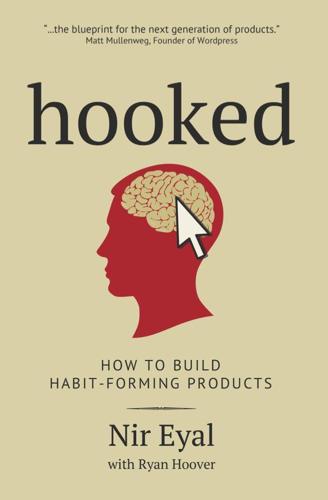
Hooked: How to Build Habit-Forming Products
by
Nir Eyal
Published 26 Dec 2013
FIGURE 28 The results showed that those who made their own origami animals valued their creation five times higher than the second group’s valuation, and nearly as high as the expert-made origami values (figure 28). In other words, those who invested labor associated greater value with their paper creations simply because they had worked on them. Ariely calls this the IKEA effect. IKEA, the world’s largest furniture retailer, sells affordable, ready-to-assemble household furnishings. The Swedish company’s key innovation is its packaging process, which allows the company to decrease labor costs, increase distribution efficiency, and better utilize the real estate in its stores.
…
Using the Bible App at church not only has the benefit of driving growth, it also builds commitment. Every time users highlight a verse, add a comment, create a bookmark, or share from the app, they invest in it. As described in chapter 5, Dan Ariely and Michael Norton have shown the effect small amounts of work have on the way people value various products. This so-called IKEA effect illustrates the connection between labor and perceived worth. It is reasonable to think that the more readers put into the Bible App in the form of small investments, the more it becomes a repository of their history of worship. Like a book that is dog-eared and filled with scribbled insights and wisdom, the app becomes a treasured asset that won’t easily be discarded.
…
James Gregory Lord, The Raising of Money: 35 Essentials Trustees Are Using to Make a Difference (Seattle: New Futures Press, 2010). 3. Robert B. Cialdini, Influence: The Psychology of Persuasion (New York: HarperCollins, 2007). 4. Michael I. Norton, Daniel Mochon, and Dan Ariely, The “IKEA Effect”: When Labor Leads to Love (SSRN Scholarly Paper, Rochester, NY), Social Science Research Network. (March 4, 2011), http://papers.ssrn.com/abstract=1777100. 5. J. L. Freedman and S. C. Fraser, “Compliance Without Pressure: The Foot-in-the-Door Technique,” Journal of Personality and Social Psychology 4, no. 2 (1966): 196–202. 6.

Shadow Work: The Unpaid, Unseen Jobs That Fill Your Day
by
Craig Lambert
Published 30 Apr 2015
In 2011, Michael Norton of Harvard Business School, in collaboration with Daniel Mochon and Dan Ariely, published a series of experiments in a paper called “The Ikea Effect: When Labor Leads to Love.” Their subjects assembled furniture from Ikea kits, folded paper in the style of Japanese origami, and constructed objects from sets of Legos. “Participants saw their amateurish creations, of both utilitarian and hedonic products, as similar in value to the creations of experts,” the authors wrote, “and expected others to share their opinions.” Making things boosts the user’s feeling of pride and competence. It also creates a showpiece that advertises your expertise. The Ikea effect comes packed with rewards. SUCH EMOTIONAL PAYOFFS have always made DIY endeavors attractive, at least to a certain audience.
…
Customers may exchange messages with companies via Facebook, send photos or videos of products through Instagram to show what went wrong or what they would like to see, interact with customer service departments via texts, or ramp up their use of “live chat” dialogs with company representatives. Such exchanges are, in part, what the insatiable information dragnet is about. The closer bond may help businesses cultivate a consumer base with a friendlier attitude toward corporations, as the two camps develop an informal partnership. The “Ikea effect” may also strengthen brand loyalty for products that consumers have helped design and build. In many sectors, customers will look for more personalized goods and services—having things their way. They’ll assemble end tables and add their own cream to coffee—but will also want input on the design of their clothing, furniture, and bicycles, leading to more individualized products.
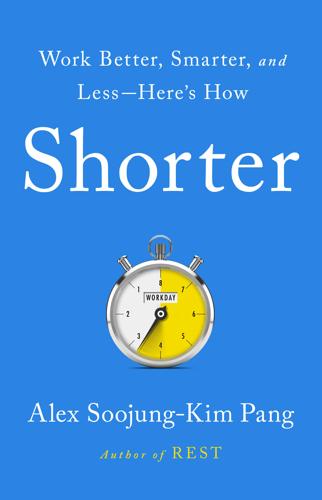
Shorter: Work Better, Smarter, and Less Here's How
by
Alex Soojung-Kim Pang
Published 10 Mar 2020
On shared meals and fire station morale, see Kevin M. Kniffin et al., “Eating Together at the Firehouse: How Workplace Commensality Relates to the Performance of Firefighters,” Human Performance 28, no. 4 (2015): 281–306, https://doi.org/10.1080/08959285.2015.1021049. Give Employees Control. On the IKEA effect and examples of control improving satisfaction, see Michael I. Norton et al., “The IKEA Effect: When Labor Leads to Love,” Journal of Consumer Psychology 22, no. 3 (July 2012): 453–460, https://doi.org/10.1016/j.jcps.2011.08.002; Farah Mohammed, “Why We Pay to Do Stuff Ourselves,” JSTOR Daily, August 16, 2019, https://daily.jstor.org/why-we-pay-to-do-stuff-ourselves; Craig Knight and S.
…
Duke University psychology professor Dan Ariely once ran an experiment in which one group assembled a cardboard box while a second group was given a preassembled cardboard box. When each group was asked how much they liked the box and how valuable they thought it was, the “builder” group liked their boxes more and thought they were more valuable than the “inspector” group. They dubbed this the “IKEA effect,” and it’s one that scientists and marketers have observed in lots of contexts. It’s why cake mixes that require an egg and oil are rated by their makers as better-tasting than cakes made from mixes that just require water. It’s why yogurt shops that let you add your own toppings can charge a premium price and why a stuffed bear whose features you choose costs more than an off-the-shelf toy.
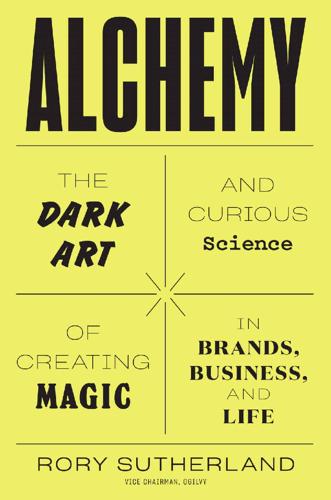
Alchemy: The Dark Art and Curious Science of Creating Magic in Brands, Business, and Life
by
Rory Sutherland
Published 6 May 2019
6.2: How to Buy a Television for Your Pet Monkey 6.3: Lost and Gained in Translation: Reality and Perception as Two Different Languages 6.4: Mokusatsu: The A-Bomb, the H-Bomb and the C-Bomb 6.5: Nothing New under the Sun 6.6: When It Pays to Be Objective – and When It Doesn’t 6.7: How Words Change the Taste of Biscuits 6.8: The Map Is Not the Territory, but the Packaging Is the Product 6.9: The Focusing Illusion 6.10: Bias, Illusion and Survival 6.11: How to Get a New Car for £50 6.12: Psychophysics to Save the World 6.13: The Ikea Effect: Why It Doesn’t Pay to Make Things Too Easy 6.14: Getting People to Do the Right Thing Sometimes Means Giving Them the Wrong Reason 7: How to Be an Alchemist 7.1: The Bad News and the Good News 7.2: Alchemy Lesson One: Given Enough Material to Work On, People Often Try to Be Optimistic 7.3: Sour Grapes, Sweet Lemons and Minimising Regret 7.4: Alchemy Lesson Two: What Works at a Small Scale Works at a Large Scale 7.5: Alchemy Lesson Three: Find Different Expressions for the Same Thing 7.6: Alchemy Lesson Four: Create Gratuitous Choices 7.7: Alchemy Lesson Five: Be Unpredictable 7.8: Alchemy Lesson Six: Dare to Be Trivial 7.9: Alchemy Lesson Seven: In Defence of Trivia Conclusion: On Being a Little Less Logical Solving Problems Using Rationality Is Like Playing Golf With Only One Club Finding the Real Why: We Need to Talk about Unconscious Motivations Rebel against the Arithmocracy Always Remember to Scent the Soap Back to the Galapagos Endnotes About the Author Copyright About the Publisher Rory’s Rules of Alchemy The opposite of a good idea can also be a good idea.
…
If we were capable of objectively viewing the world we would regard this as deception, but alas we can’t. Also, it’s not as if, without these smoke and mirrors, we’d suddenly see the world with perfect accuracy – we’d just see different smoke and different mirrors. So, do you want the smoke and mirrors that help the environment, or the smoke and mirrors that don’t? 6.13: The Ikea Effect: Why It Doesn’t Pay to Make Things Too Easy In the 1950s, the General Mills food company launched a line of cake mixes under the Betty Crocker brand that included all the dry ingredients, including milk and eggs. All you needed to do was add water, mix and stick the pan in the oven – what could go wrong?
…
The psychologists believed that doing a little more work made women* feel less guilty, while still saving time, but making just enough effort to give the sense of having contributed to the cake’s creation. There is a name for the addition of consumer effort to increase someone’s estimation of value. It should perhaps be called the Betty Crocker effect, since they spotted it first, but it’s instead known as the IKEA effect, because the furniture chain’s eccentric billionaire founder Ingvar Kamprad was convinced that the effort invested in buying and assembling his company’s furniture added to its perceived value. When working with IKEA I was once advised: ‘Do not, under any circumstances, suggest ways of making the IKEA experience more convenient.
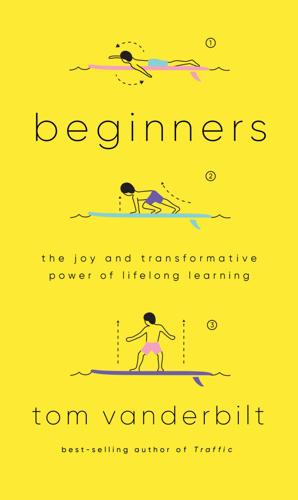
Beginners: The Joy and Transformative Power of Lifelong Learning
by
Tom Vanderbilt
Published 5 Jan 2021
Havriluk, “Performance Level Differences in Swimming: Relative Contributions of Strength and Technique,” in Biomechanics in Swimming XI, ed. Per-Ludvik Kjendiie, Robert Keig Stallman, and Jan Cabri (Oslo: Norwegian School of Sport Science, 2010). “A good, efficient swimming stroke”: Laughlin, Total Immersion, 17. “IKEA effect”: See Michael Norton et al., “The IKEA Effect: When Labor Leads to Love,” Journal of Consumer Psychology 22, no. 3 (2012): 453–60. expanded our brain size: In his excellent book Hands, John Napier writes, “S. L. Washburn of Berkeley has emphasized that increase in brain size (a somewhat crude but useful method of estimating the overall capability of the brain in terms of motor and tactile functions, skill, memory, and foresight—all of which take up brain space) is more likely to have followed than preceded tool-making, so that a positive feed-back became established.”
…
It wasn’t an umbrella. Motivated by the spirit of this book, I had another idea. I could make my own ring. Or, more feasibly, find an expert jeweler to help me make my own ring. I began looking around the internet and found that there was a flourishing practice of this in New York City. The “IKEA effect,” as it’s been called, seems to lead people to place a higher value on things they’d had a hand in creating; we feel more attached to that bookcase we just struggled to assemble. So what better place to instill this value than in a wedding ring, this melding of aesthetic beauty and emotional resonance?
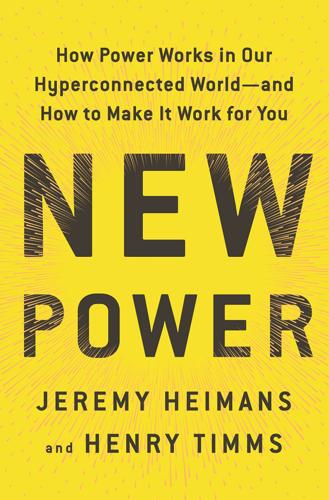
New Power: How Power Works in Our Hyperconnected World--And How to Make It Work for You
by
Jeremy Heimans
and
Henry Timms
Published 2 Apr 2018
Wanqiang Li: Kristie Wong, “Xiaomi and the Power of the Fan Economy,” Freshtrax, September 22, 2014. “having a research and development team”: Ibid. Company lore has developed: Jessica Dolcourt, “Xiaomi’s Key to Smartphone Success: ‘Be Friends with Our Fans,’ ” CNET, February 13, 2015. “IKEA effect”: Michael I. Norton, Daniel Mochon, and Dan Ariely, “The ‘IKEA Effect’: When Labor Leads to Love,” Harvard Business School Publishing, 2011. “Builders valued their”: Ibid., 11. His fundraising target: Zack Danger Brown’s Kickstarter page, “Potato Salad,” July 2017. www.kickstarter.com. “names of idiots”: Comment from YouTube user Radickly Rick. https://www.youtube.com.
…
Company lore has developed to celebrate the stories of the creativity of its users: like the fan who had an idea for an improvement to the flashlight function when trying to get home a little drunk one night. The work of behavioral economists Michael I. Norton, Daniel Mochon, and Dan Ariely helps us understand the dynamics behind companies like Xiaomi. They have identified what they call the “IKEA effect,” a tendency of people to place a higher value on self-made products. Their key observation was that when people put together furniture from a self-assembly kit, they tend to seriously overvalue their (often poorly constructed) creations. To test whether the phenomenon holds more broadly, they designed an experiment with a group of people directed to fold origami swans.

Actionable Gamification: Beyond Points, Badges and Leaderboards
by
Yu-Kai Chou
Published 13 Apr 2015
That feeling of personal ownership also motivates them to talk about their IKEA furniture more often with friends. The same can be said of small carpentry projects like building a garden box, bench, or birdhouse. In fact, behavioral scientists Dan Ariely and Mike Norton started to term this phenomenon “Ikea effect.”27 One thing to note, if the Build-From-Scratch technique distracts people away from the First Major Win-State (where users first exclaim, “Wow! This is awesome!”), then it is not a good design. Either you should give users the option to Build-From-Scratch with some quick template options that will allow them to move forward quickly and customize later, or you want to ensure that the Build-From-Scratch Technique itself is a First Major Win-State that users will feel excited about.
…
.↩ Noah Goldstein, Steve Martin, and Robert Cialdini. Yes! 50 Scientifically Proven Ways to Be Persuasive. P74. Simon & Schuster. New York, NY. 2010.↩ Robert Cialdini. Influence: Science and Practice. 5th Edition. P70. Pearson Education. Boston, MA. 08/08/2008.↩ Michael Norton, Daniel Mochon, and Dan Ariely. “The IKEA effect: When labor leads to love”. Journal of Consumer Psychology 22 (3): 453–460.↩ Dan Ariely. Predictably Irrational. P175. Harper Perennial. New York, NY. 2010.↩ McDonald’s Monopoly Website: http://winners.playatmcd.com↩ Robert Zajonc, *Journal of Personality and Social Psychology 9: 1-27. “Attitudinal Effects of Mere Exposure”. 1968.↩ Google Analytics platform website: google.com/analytics↩ Amazon Recommendation Customization Help Page: http://www.yukaichou.com/AmazonRecommendation↩ Danny Sullivan.
…
This is a mix of Core Drives 2, 4, 5, 7, 8, and the Hidden Core Drive 9: Sensation.22 For drives like Core Drive 6: Scarcity & Impatience, as well as with the Endowment Effect within Core Drive 4: Ownership & Possession, these are often not explained in other behavioral models. They are mental shortcuts we take in our heads and are academically known as cognitive biases and decision-making heuristics23. There is a list of dozens of heuristics24, including Anchoring (everything is relative in my mind), Illusory superiority (I am surely above average), IKEA effect (I value what I built), and Loss Aversion (I wouldn’t risk $10 to earn $15) that we have discussed in several of the previous chapters. Together, Fogg’s six components of motivation plus a list of behavioral heuristics, become a fairly complete view of all our behaviors; though they may not explain why we would sometimes die for a greater cause - Epic Meaning & Calling.

Frugal Innovation: How to Do Better With Less
by
Jaideep Prabhu Navi Radjou
Published 15 Feb 2015
Consumers now design, build and sell products themselves Some Eastern philosophy views creative expression as a basic human need on a par with food and shelter, a notion that is supported by Western psychology. In Happy Money, Michael Norton, associate professor of marketing at Harvard Business School, demonstrates that investing time, labour and money affects how people value products and people.3 Norton’s 2012 study with Daniel Mochon and Dan Ariely on the so-called IKEA effect shows that people value products much more when they assemble the products themselves.4 Customers are increasingly able to express their creativity and emotional investment in physical objects by designing and building them. The falling cost of 3D printers and personalisation platforms has made this easier and cheaper.
…
., CEO, InProcess, interview with Navi Radjou, March 14th 2014. 14“Philips Introduces ‘Lighting as a Service’”, SustainableBusiness.com, January 23rd 2014. 15“Meet Simple; A Worry-Free Alternative To Traditional Banking”, TraxonTech, March 14th 2013. 6Principle five: co-create value with prosumers 1Von Hippel, E., Democratizing Innovation, MIT Press, 2006. 2“Samsung ranks second in R&D spending for 2013”, GS Marena Blog, October 24th 2013. 3Dunn, E. and Norton, M., Happy Money: The Science of Smarter Spending, Simon & Schuster, 2013. 4Norton, M., Ariely, D. and Mochon, D., “The IKEA effect: When labor leads to love”, Journal of Consumer Psychology, Vol. 22, 2012, pp. 453–60. 5Coase, R., “The Nature of the Firm”, Economica (Blackwell Publishing), Vol. 4, Issue 16, 1937, pp. 386–405. 6White House, “Remarks by the President at the White House Maker Faire”, Office of the Press Secretary, June 18th 2014. 7Dutcher, J., “Massimo Banzi: How Arduino is Open-Sourcing Imagination”, DataScience@Berkeley, April 22nd 2014. 8European Commission, “The Sharing Economy: Accessibility Based Business Models for Peer-to-Peer Markets”, Business Innovation Observatory, September 2013. 9Cortese, A., Locavesting: The Revolution in Local Investing and How to Profit from It, John Wiley, 2011. 10Nussbaum, B., Creative Intelligence: Harnessing the Power to Create, Connect, and Inspire, HarperBusiness, 2013. 11“Giffgaff”, World Heritage Encyclopedia, November 25th 2009. 7Principle six: make innovative friends 1Safian, R., “Generation Flux: Beth Comstock”, Fast Company, January 2012. 2Comstock, B., senior vice-president and chief marketing officer, GE, interview with Navi Radjou, April 7th 2014. 3Groth, O., “Hacking Wicked Social Problems With Renaissance Thinkers and Gamers”, Huffington Post, February 18th 2014. 4Martin, T., “The (Un)examined Organization”, The Alpine Review, Issue No. 2, 2014. 5Martin, T., CEO, Unboundary, e-mail exchange with Navi Radjou, August 18th 2014. 6“Four Disruption Themes for Business”, The Altimeter Group, April 2013. 7Groth, op. cit. 8Marks & Spencer’s Plan A Report, 2014. 9Mulcahy, S., senior vice-president and managing director of financial services industry, Salesforce.com, interview with Navi Radjou, March 6th 2014. 10Rebours, C., CEO, InProcess, interview with Navi Radjou, March 14th 2014. 11Gertler, N., “Industrial Ecosystems: Developing Sustainable Industrial Structures”, MIT master’s thesis, Smart Communities Network, 1995. 12Corkery, M., and Silver-Greenberg, J., “Lenders Offer Low-Cost Services for the Unbanked”, New York Times Dealbook, July 22nd 2014. 13Fera, R.A., “American Express Spotlights the Issue of Financial Exclusion in Davis Guggenheim Doc ‘Spent’”, Fast Company, March 2014. 14Birol, J., serial entrepreneur and strategy consultant, interview with Navi Radjou, August 25th 2014. 15Wiseman, L., Thinkers50-ranked leadership expert, interview with Navi Radjou, August 18th 2014. 16“Pearson debuts new global accelerator class”, Pearson News, June 16th 2014. 17Coughlin, B., CEO, Ford Global Technologies, e-mail exchange with Navi Radjou, August 2014. 18Radjou, N., “Innovation Networks: Global Progress Report 2006,” Forrester Report, June 2006. 19Vandebroek, S., chief technology officer, Xerox, interview with Navi Radjou, August 25th 2014. 20Musk, E., “All Our Patent Are Belong To You”, Tesla Blog, June 12th 2014. 21Litzler, J-B., “Sébastien Bazin divise Accor en deux pour mieux le réveiller”, Le Figaro, November 27th 2013. 22Lacheret, Y., senior vice-president, entrepreneurship advocacy, Accor Group, interview with Navi Radjou, July 7th 2014. 8Fostering a frugal culture 1Hall, J., “Sir Stuart Rose on the ethical spirit of Marks & Spencer”, Daily Telegraph, February 1st 2009. 2Vasanthakumar, V., Senior Associate, Office of the Chief Education Adviser at Pearson, interview with Jaideep Pradhu, August 28th 2014. 3Datta, M., head of Plan A delivery, Marks & Spencer’s worldwide properties, interview with Jaideep Prabhu, May 9th 2014. 4Marks & Spencer’s Plan A Report, 2014. 5Faber, E., CEO, Danone, e-mail exchange with Navi Radjou, August 2014. 6Lawrence, J., senior sustainability adviser and in-house counsel to Kingfisher Group’s Net Positive strategy, interview with Jaideep Prabhu, February 21st 2014. 7Kingfisher, Net Positive Report, 2013/14. 8Ibid. 9Marks & Spencer, op. cit. 10Radjou, N., Prabhu, J. and Ahuja, S., L’Innovation Jugaad: Redevenons Ingénieux!
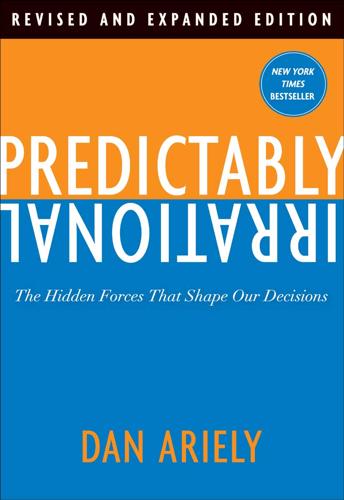
Predictably Irrational, Revised and Expanded Edition: The Hidden Forces That Shape Our Decisions
by
Dan Ariely
Published 19 Feb 2007
In fact, I can say with a fair amount of certainty that pride of ownership is inversely proportional to the ease with which one assembles the furniture; wires the high-definition television to the surround-sound system; installs software; or gets the baby into the bath, dried, powdered, diapered, and tucked away in the crib. My friend and colleague Mike Norton (a professor at Harvard) and I have a term for this phenomenon: the “Ikea effect.” Another peculiarity is that we can begin to feel ownership even before we own something. Think about the last time you entered an online auction. Suppose you make your first bid on Monday morning, for a wristwatch, and at this point you are the highest bidder. That night you log on, and you’re still the top dog.
…
procedures and, 62–63 mandatory checkups and, 118 patient compliance and, 260–64 placebo effect and, 173–94, 275–78; see also placebo effect price of medical treatments and, 176, 180–87, 190 public policy and spending on, 190 scientifically controlled trials and, 173–76 self-imposed deadlines and, 118–19 helping, thinking about money and, 74, 75 herding, 36–38 self-herding and, 37–38 Heyman, James, 69–71, 136, 336–37 HIV-AIDS, 90 Holy Roman emperors, placebo effect and, 188 Home Depot, 78 Honda, 120, 121 honesty, 195–230 contemplation of moral benchmarks and, 206–9, 213 dealing with cash and, 217–30 importance of, 214–15 as moral virtue, 203 oaths and, 208–9, 211–13, 215 reward centers in brain and, 203, 208 Smith’s explanation for, 202, 214 superego and, 203–4, 208 see also dishonesty Hong, James, 21 honor codes, 212–13 hormones, expectation and, 179 house sales: anchoring and, 30-31 relativity and, 8–9, 19 value in owner’s eyes and, 129, 135, 265–69 housing market: bubble in, 289–90 decreasing valuations and, 265–66, 279 I ice cream, FREE!, time spent on line for, 61 “Ikea effect,” 135 immediate gratification: e-mail and, 255–59 unpleasant medical treatments and, 261–64 imprinting, 25, 34, 43 see also anchoring indecision, 151–53 individualism, 68 thinking about money and, 74, 75 ingredients, exotic-sounding, 164–65 innovation, increased globalization and, 316–18 insurance fraud, 196, 223 insurance industry, 296 punitive finance practices of, 299-301 spreading cost of, 304 interest-only mortgages, 287–88 interferon, 260–64 internal mammary artery ligation, 173–74, 191 inventiveness, 68 IRA (Irish Republican Army), 156–57 Iran, lack of trust in, 214–15 irrational behaviors, xxix–xxx opportunities for improvement and, 240–44 systematic and predictable nature of, xxx, 239 see also specific topics IRS (Internal Revenue Service), 196 J Japan, savings rate in, 109 jealousy, comparisons and, 15–19 Jerome, Jerome K., 273–74 job performance. 320–24 public scrutiny and, 322 relationship between compensation and, 320–21, 322–24 Jobst suit, 192–94 Johnston, David Cay, 204 JP Morgan Chase, 280 judgment and decision making (JDM), xxviii see also behavioral economics “Just say no” campaign, 100, 101 K Kahneman, Daniel, 19, 129 Keeney, Ralph, 264 knee surgery, arthroscopic, 174–76 Knetsch, Jack, 129 Knight-McDowell, Victoria, 277 Koran, 215 L “Lake Wobegone Effect,” 268–69 Latin America, lack of trust in, 214 Lay, Kenneth, 219 learned helplessness, 312–16 experiments on, 312–14 in financial meltdown, 314–16 recovering from, 315–16 Leaves of Grass (Whitman), 40–41 Lee, Leonard, 21, 157–59, 161, 337 legal profession: attempts at improving ethics of, 213–14 decline of ethics and values in, 209–10 Lehman Brothers, 280, 310 leisure, blurring of partition between work and, 80, 81 Leland, John, 122–23 Leo III, Pope, 188 Leonardo da Vinci, 274 Levav, Jonathan, 231–37, 337 Levitt, Steven, xvi Li, Jian, 166–68 Lincoln, Abraham, 177 Linux, 81 List, John, xvi loans: punitive finance practices and, 300–301, 304 see also mortgages lobbyists, congressional restrictions on, 205 Loewenstein, George, 21, 26, 30–31, 39, 89,, 320–21, 337–38 Logic of Life, The (Harford), 291–92 Lorenz, Konrad, 25, 43 loss: aversion to, 134, 137, 138, 148–49 fear of, 54–55 Lost World, The (Crichton), 317–18 loyalty: in business-customer relations, 78–79 of employees to their companies, 80–84 M Macbeth (Shakespeare), 188 Madoff, Bernard, 291 Maier, Steve, 312-13 major, college students’ choice of, 141–42 manufacturer’s suggested retail price (MSRP), 30, 45 marketing: high price tag and, 24–25 hype of, related to satisfaction derived from product, 186–87, 190–91 relativity and, 1–6, 9–10 “trial” promotions and, 136–37 zero cost and, 49–50 market norms, 67–88 companies’ relations with their customers and, 78–80 companies’ relations with their employees and, 80–84, 252–54 doing away with, 86–88 education and, 85 mere mention of money and, 73–75 mixing signals of social norms and, 69, 73–74, 75–77, 79, 214, 250–52 reducing emphasis on, 88 social norms kept separate from, 67–69, 75–76, 77–78 willingness to risk life and, 84 working for gifts and, 72–74 working under social norms vs., 69–72 Maryland Judicial Task Force, 210 Mazar, Nina, 196–97, 206, 219–20, 224, 320–21, 338 McClure, Sam, 166–68 Mead, Nicole, 74–75 medical benefits, recent cuts in, 82 medical care, see health care medical profession: conflicts of interest and, 293, 295 decline of ethics and values in, 210 salaries of, as practicing physicians vs.

Meet the Frugalwoods: Achieving Financial Independence Through Simple Living
by
Elizabeth Willard Thames
Published 6 Mar 2018
It wasn’t perfect—there are some things I’d do differently next time, such as buy an electric sander instead of sanding every inch by hand—but we were delighted. After this husband-wife DIY adventure, we realized we were actually happier with the end result than we would’ve been if we’d hired someone. In addition to spending only $183.45 (versus the $2,000), we were the beneficiaries of what researchers call the “IKEA effect.” It’s proven that people experience greater satisfaction with projects they do themselves, even if the result is subpar, than with projects they pay other people to do. When we pay for a service, we expect a level of perfection that’s unattainable. But when we do it ourselves, we know the effort and hard work that went into the process, which leads to a higher degree of contentment with the finished product.
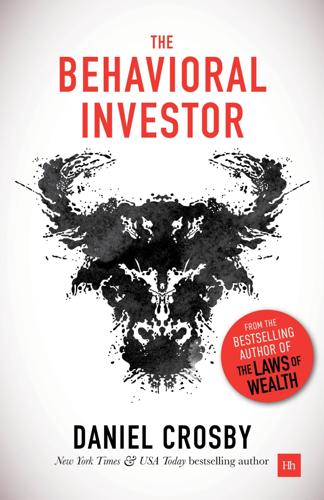
The Behavioral Investor
by
Daniel Crosby
Published 15 Feb 2018
* * * In summary, ego risk is made manifest in behaviors that privilege our need for felt personal competency at the expense of clear-eyed decision-making. Specific examples might include good old-fashioned overconfidence, a tendency to become defensive when pet ideas are challenged (backfire effect), or a belief that one’s mere involvement in a project makes it more likely to succeed (the awesomely named IKEA effect). Ego risk leaves specific evidence of its presence in a trading log that might include overly concentrated positions, churning and the use of excessive leverage. Whatever the specific manifestation, the source is always the same – an ego that privileges its own care and feeding over making good decisions.
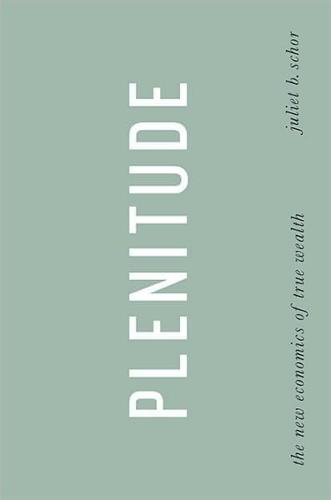
Plenitude: The New Economics of True Wealth
by
Juliet B. Schor
Published 12 May 2010
Unfortunately, the data does not allow identification of purchasers (or end users), and includes not only goods destined for households, but also those purchased by businesses and government. Let’s start with the living room couch. During this nine-year period (1998-2007), the total weight of all the furniture imported into the United States rose 155 percent, from 4,671 million kilograms to 11,894 million. Anecdotal evidence suggests an IKEA effect. IKEA, a low-cost Swedish producer specializing in up-to-date design at bargain prices, opened its first U.S. store in 1985 and subsequently increased its national presence. The large increase in furniture volumes is probably due to the downward price pressure exerted by IKEA and similar retailers, as well as to a growing sensibility of fashion in the furniture market.

Makers
by
Chris Anderson
Published 1 Oct 2012
Some research by the Chicago economist Erik Hurst suggests that half of entrepreneurs start businesses as much to pursue happiness as to make money.21 What’s more, consumers tend to value more highly products in which they feel they have had a hand in their creation, whether assembling a kit or just encouraging the creators themselves online. Researchers call this “the IKEA Effect,” and it dates all the way back to the Home Economics movement. As Duke University behavioral economist Dan Ariely and his colleagues write in a paper on this, When instant cake mixes were introduced in the 1950s as part of a broader trend to simplify the life of the American housewife by minimizing manual labor, housewives were initially resistant: the mixes made cooking too easy, making their labor and skill seem undervalued.
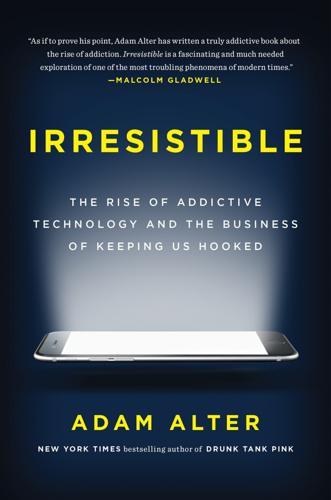
Irresistible: The Rise of Addictive Technology and the Business of Keeping Us Hooked
by
Adam L. Alter
Published 15 Feb 2017
Holmes, Ella L. James, Thomas Coode-Bate, and Catherine Deeprose, “Can Playing the Computer Game ‘Tetris’ Reduce the Build-Up of Flashbacks for Trauma? A Proposal from Cognitive Science.” Plos One 4, January 7, 2009e4153. In one experiment run: Michael I. Norton, Daniel Mochon, and Dan Ariely, “The ‘IKEA Effect’: When Labor Leads to Love,” Journal of Consumer Psychology 22, no. 3 (July 2012): 453–60; see also: Dan Ariely, Emir Kamenica, and Dražen Prelec, “Man’s Search for Meaning: The Case of Legos,” Journal of Economic Behavior and Organization 67 (2008): 671–77. Vygotsky explained that: On Vygotsky and Csikszentmihalyi: L.
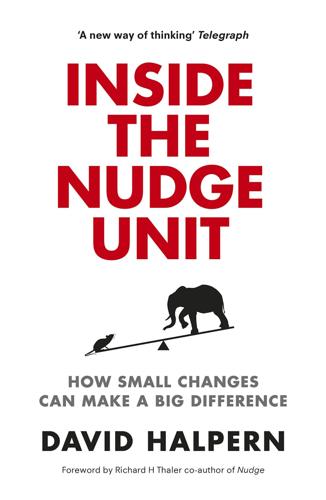
Inside the Nudge Unit: How Small Changes Can Make a Big Difference
by
David Halpern
Published 26 Aug 2015
But the point of the exercise was to produce something that policymakers would find useful – and actually use. As it happens, there’s a basic behavioural phenomena that applies to both people and organisations around ‘commitment’: people and organisations are much more likely to do something if they were previously engaged in even a small commitment or helped build it themselves (the IKEA effect). Cialdini gives a neat example, in his early popularisation of the psychology of influence, of a restaurant that was struggling with large numbers of customers failing to turn up for bookings. Staff taking phone bookings were instructed to make a seemingly tiny change: to pause after asking customers ‘Would you let us know if you can’t make it?’